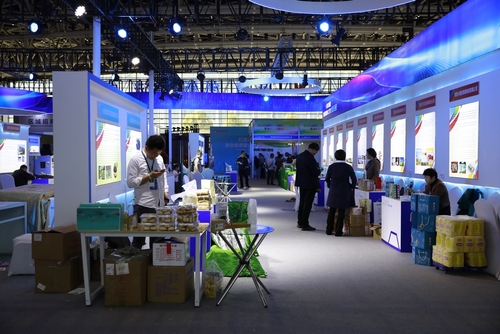Tech and AI: Capturing Worker Expectations
We're conducting surveys across multiple industries to gauge worker perspectives on both existing and upcoming technologies in the workplace, such as AI, algorithmic management, productivity monitoring, hiring technologies, workplace benefits, among others, to explore the broad scope of the "future of work" beyond just AI and automation.

Worker-Informed Technology Standards
The development of the workplace technology standards below started with a national survey of 1,800 workers. They will be maintained through ongoing engagement with workers - through meetings, dinners, interviews, etc.
The standards have been organized around topics that have been suggested by workers and touch upon various aspects of responsible technology management, with a particular focus on protections, security, understanding, decision-making, and procurement.

01
Protections and Equity:
- Provide Baseline Protections: Workers note the need for a baseline of rights that better define what the potential impact of technology may be on their job security.
- Mitigate Potential for Competitive UnFairness: Workers highlighted the potential for technology to contribute to unfair competitive advantages that could lead to inequality among workers.
- Ensure Companies Have a Good Track Record of Securing Protections Against Discrimination and Other Prohibited Practices: Ensuring companies comply with federal laws and protections is crucial with technological advancements; a poor record may indicate misuse of technology.
- Protect Intellectual Rights: Protect workers’ creative works and establish standards for citing and attributing AI contributions.

02
Security and Safety:
- Privacy: Workers express concern for the privacy of anyone who interacts with AI and technology. This includes not only themselves, but also customers, consumers, students, patients, etc.
- Safety: Workers see safety as multifaceted and see the need for safety guidelines to ensure the physical, mental, and emotional safety of workers.
- Security: Workers want to see employers ensure the security of technology is being used. Especially if they collect sensitive information. They want to see clear plan for managing unintended consequences and contingencies.
- Ethical Use: Workers want to see a plan that outlines who is responsible if errors are committed due to the use of AI and other sophisticated technologies.
- Trustworthiness of AI: This standard may be more for vendors and companes, but workers noted wanting to see reports or findings that compare AI-decision making with human decision-making.
- Guidelines for AI High-Risk Uses: This also may be for vendors more than employers, but workers generally want to learn about and see information and guidelines for what is considered high-risk uses of AI. To some workers, high-risk uses were considered those products that would collect, store, and process data on workers (e.g. voice recognition).

03
Oversight, Use, and Implementation
- Need for Clearly-defined Oversight: Workers would like to see employer provide oversight on the use and implementation of AI and other emerging technologies. This includes establishing use cases, guidelines for problematic uses, and defining who is responsible for AI decisions.
- Provide Clearly-defined Use Cases: Other than vendors, employers were seen as responsible for providing clearly defined use cases and acceptable applications.
- Provide Clearly-defined Business Function(s): Employers were seen as responsible for providing clearly defined business functions.

04
Worker Engagement
- Be Proactively Transparent. Keep Workers Informed on Emerging Technologies: Keep workers informed about upcoming technologies that may be introduced into the workplace and their potential applications.
- Give Workers the Opportunity to Contribute to Decision-Making on AI and Workplace Tech: Workers want to be engaged in decision-making regarding the implementation of AI and other technologies in the workplace.
- Give Workers a Chance to Review and Select Vendors: Involve workers in the selection of vendors and assess the business use case for technology.
- Create Space for Transparency and Dialogue: Workers want to see employers creating space to discuss and understanding the risks, benefits, and ethical concerns associated with AI and technology.

05
Procurement and Cost Analysis:
- Conduct Cost/Benefit Analysis on AI and Other Workplace Technologies: Workers would like to see employers better evaluate the investment in AI and other emerging technologies against other potential investments, such as better wages for workers. Some workers, also noted an interest in seeing employers and/or industry conduct studies on the impact of emerging technologies and AI on the short and long-term job security prospects for workers.
